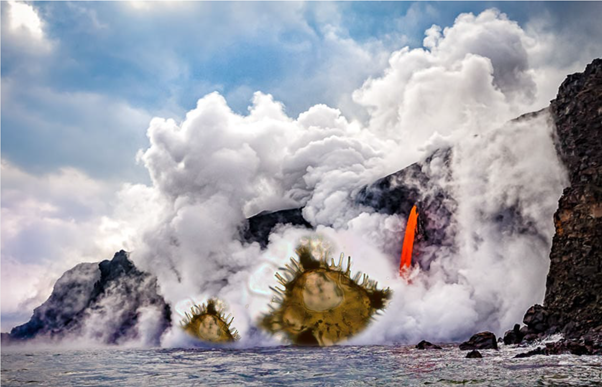Clues from ancient heat
High atmospheric CO2 concentrations due to Anthropogenic activity causing climate warming, and related issues such as ocean acidification, expanding OMZs, and sea level rise, are widely recognized global issues that are of pivotal societal concern (see e.g., latest IPCC report). Learning from past episodes of global warming, underlying mechanisms and implications is therefore equally high on the research agenda, including efforts to obtain suitable and expanded sedimentary archives. This research theme is also central to the mission of the International Ocean Discovery Program (IODP). Recent IODP Expedition 396, ‘Mid-Norwegian Continental Margin Magmatism’ drilled a suite of Paleocene and Eocene igneous complexes as well as related, unprecedented expanded sedimentary PETM sections, that will yield equally unprecedented answers. The entire IODP X396 shipboard and shore based Scientific Party of >50 international scientists will collaborate in generating unique and novel, integrated sedimentary and volcanic datasets. Furthermore, generated results will be of great interest to the public as well as the wider scientific community of paleoclimatologists, carbon cycle paleo-environment scientists and modelers, including community efforts directly linked to IPCC, such as the Deep Time Model Intercomparison Project (DeepMIP).
|
|
|
Working in concert with the entire Science Party of IODP X396, this project will lead to providing answers to important outstanding questions. |
| Henk Brinkhuis |

Project Team

Project description
The emplacement of the North Atlantic Igneous Province (NAIP), which ultimately resulted in continental break-up and formation of the North Atlantic Ocean has been implicated as the driver for the warmest climatic phase of the Cenozoic: the Paleocene-Eocene Thermal Maximum or PETM, some 56 million years ago. Recently, IODP Expedition 396 set out to elucidate the role of NAIP volcanism in the rapid global warming during the PETM. One of the main aims was to document and constrain how such igneous provinces may perturb the global Carbon cycle, but also to resolve their influence on local and regional ecosystems. The expedition yields a suite of PETM successions which allow paleoclimatological and paleoenvironmental analysis in unprecedented detail and resolution. Working in concert with the entire Science Party of IODP X396, this project will lead to providing answers to important outstanding questions – like e.g., what the relationship between PETM volcanism and global warming truly was, or how the marine bioproductivity cycles at ~60 degrees northern latitudes functioned during the anomalously warm PETM climate, to generating a record of PETM climatic variability with a decadal-scale resolution.
PhD position: Generating high resolution marine palynological (dinocyst) and organic biomolecular information across the PETM of the X396 sections, and integrating the thus acquired dataset with the various other, related high resolution paleoenvironmental studies (incl. potentially various other micropaleontological, palaeobotanical (pollen), and/or geochemical (isotope) analyses) of fellow IODP X396 researchers, to establish various unique records, suitable for answering the research questions, for example how volcanism influence local ecosystems.
References:
- Planke, S., Berndt, C., and Alvarez Zarikian, C.A., 2021. Expedition 396 Scientific Prospectus: Mid-Norwegian Continental Margin Magmatism. International Ocean Discovery Program. https://doi.org/10.14379/iodp.sp.396.2021
- https://www.deepmip.org/

Connected themes
- Our Future Ocean
